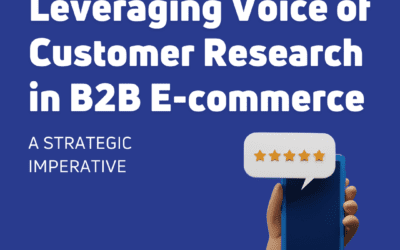In the e-commerce world, a microsite, multisite, or extended site has many interpretations or definitions. Collectively, we will refer to them as an “e-site,” which in general describes the idea of having multiple websites that address different business needs in an...
Insights
Amazon Tops Google and Bing in Product Search
BlueSky Commerce Blog
Featured
Related Posts
Speed Up, Cash In – Increase E-Commerce Performance
Why Performance Matters In today's digital age, the performance of an e-commerce site is a critical factor in determining the success of an online business. A fast, reliable, and responsive e-commerce platform enhances the user experience and directly impacts sales...
Have Questions?
Get In Touch

BlueSky Commerce
- BlueSky Commerce Partners with commercetools
- KLaunch and BlueSky Commerce Announce FoodBridge, An AI-Powered E-Commerce Solution Created for the Financial Stability of Food Banks
- Catch up with BlueSky Commerce at Shoptalk 2023!
- Industry E-Commerce Sales Veterans Leading the Way at BlueSky
- BlueSky Sponsors Brooke’s Place 2022 Hope Fore Tomorrow Golf Outing June 6, 2022
- BlueSky Commerce announces strategic partnership with Fluent Commerce
- 7 Ways to Modernize Your E-Commerce Site Design
- Creating a Digitally Native Culture: A 360 Approach to Digital Transformation
- How to Take Your B2B Brand Direct-to-Consumer
- BlueSky Commerce Sponsors Brooke’s Place Hope Fore Tomorrow Golf Outing
Follow Us
Amazon Tops Google and Bing in Product Search
It’s time to start thinking of Amazon as a platform for advertising, brand awareness, and consumer research.
Why? In the past couple years, consumer behavior online has shifted radically in favor of Amazon as a first-stop for product searches, upending traditional search engines like Google and Bing in the process.
According to a study by the financial services firm Raymond James, Amazon has made significant gains over Google and Bing in the battle for product searches. As recently as 2013, search engines had a clear advantage over Amazon for where somebody starts a product search, 55% vs 38%, respectively.
Today, however, that number has reversed itself—and then some. For the first time, the majority of all online consumers start their product search on Amazon (52%) while only about one-in-four people start their searches on a search engine like Google or Bing. This is a sizable shift in consumer behavior in a short period of time.
Methods consumers search for products
- Amazon 52%
- Search Engines 25%
- Direct 23%
What’s driving this drastic shift? While all age groups are trending towards Amazon for their initial product search, the key driver is the coming of age of Millennials and, yes, even post-Millennials. They are a group comfortable with technology and trust Amazon to have the product information, quality, and price level they desire.
Further driving home Amazon’s competitive ascension, they have started buying Google Product Listing Ads (PLAs) on top of their already-dominant Text Ads. With so many ads on Google pointing to Amazon, Amazon is cornering the online product retail market. Starting a product search on Amazon simply cuts out the middle man (i.e. Google).
This particular shift in product search dominance by Amazon has major implications for eCommerce companies. Namely, online retailers can’t afford to ignore the power of Amazon any longer.
With Google is still a major player in product search and the undisputed leader in general search, companies shouldn’t forego their Google SEO, PPC, or PLA strategy. However, Amazon’s continued rise to dominance means it’s more important than ever to have a standalone Amazon strategy. If you don’t have one, you will have limited your product reach by half as soon as their journey begins.
For example, Company A could be a high-end consumer goods retailer that decides to list key items that hit specific demographics on Amazon for brand awareness purposes. Company B could be a B2B company that marks unsold merchandise to direct to consumers on Amazon, creating an all-new revenue stream. Company C, meanwhile, could decide to list their full product catalog on Amazon to support their overall business.
Each one of those examples fulfill a strategy to leverage Amazon properly for their overall business goals: Brand awareness, inventory management, and an ecommerce storefront.
Whatever your strategy (or non-strategy) is for Amazon, if you haven’t taken a look at it recently, now’s the time or you risk losing out on future growth and stability.
Some questions to consider would be: What areas of your business are threatened due to the shift in consumer product research to Amazon? Do you need to reach new markets or stay in front of current or future markets? How will using Amazon benefit you?
Whether it’s your first time considering Amazon or you’ve been on the platform for years, BlueSky can help guide you through the process.
From analyzing your current strategy, to establishing your goals, to getting the right software for managing inventory, product messaging, and more, we can help.
Start the Conversation
BlueSky’s unmatched commerce expertise allows us to help our clients understand how to utilize omnichannel and business solutions to reach, attract, engage, and grow customers.

Related Posts
7 Effective Ways to Increase Your Average Order Value (AOV) in B2B and B2B2C E-commerce
In the competitive B2B and B2B2C e-commerce landscape, businesses are grappling with slower sales growth and the need to find new revenue streams. Leaders responsible for e-commerce strategies must focus on innovative approaches to recover lost revenue and drive...
Leveraging Voice of Customer Research in B2B E-commerce: A Strategic Imperative
Understanding stakeholder needs is crucial in the rapidly evolving landscape of B2B commerce. Conducting Voice of Customer (VoC) research has emerged as a strategic imperative for businesses aiming to transition to B2B e-commerce successfully. This blog will outline...
Navigating the Challenges of B2B E-commerce: Overcoming Sales Team Acceptance
The digital revolution has reshaped the way businesses operate, and B2B e-commerce has emerged as a critical avenue for growth. However, transitioning to B2B e-commerce is challenging, and one significant hurdle is gaining acceptance from your sales team. This...



